The new season of La Liga gets underway on 12th August. Let’s have a look at some of the teams, players and narratives to watch out for in the return of the Spanish top flight.
Este artículo también está disponible en castellano.
Performance vs. xG, La Liga 2021-22
We’ll kick off by looking at how teams performed last season in comparison to their expected goal (xG) difference.

There are various points of interest:
- Sevilla and Real Betis finished the campaign in fourth and fifth, respectively, but the underlying numbers suggest that the two teams from Seville can expect a stronger challenge from the likes of Villarreal, Real Sociedad and Athletic Club in the 2022-23 season. Both Basque clubs performed below their underlying numbers last season, well below in the case of La Real.
- Andoni Iraola looks like a very interesting coach. Not only were his Rayo Vallecano side the best of the promoted trio, finishing the campaign in 12th place, but their underlying numbers were even better, inside the top 10.
- Only two teams outperformed their xG difference to a greater extent than Elche. Their results improved significantly following the appointment of Francisco Rodríguez as head coach in late November but their underlying numbers continued to be the second worst in the division. It is likely that performance levels will have to improve if they are to remain in the top flight beyond the 2022-23 season.
Let’s look at a couple of cases in more detail:
The Real Madrid of Benzema, Vinícius and Courtois
La Liga’s top three all recorded very similar underlying numbers, but Real Madrid outperformed those numbers to a greater extent than any other team to easily claim the league title, leading the way from the 14th matchweek onwards.
In attack, only three teams more significantly outscored their xG total. Both Karim Benzema and Vinícius Júnior, the two pillars of the Madrid attack, performed above expectation.
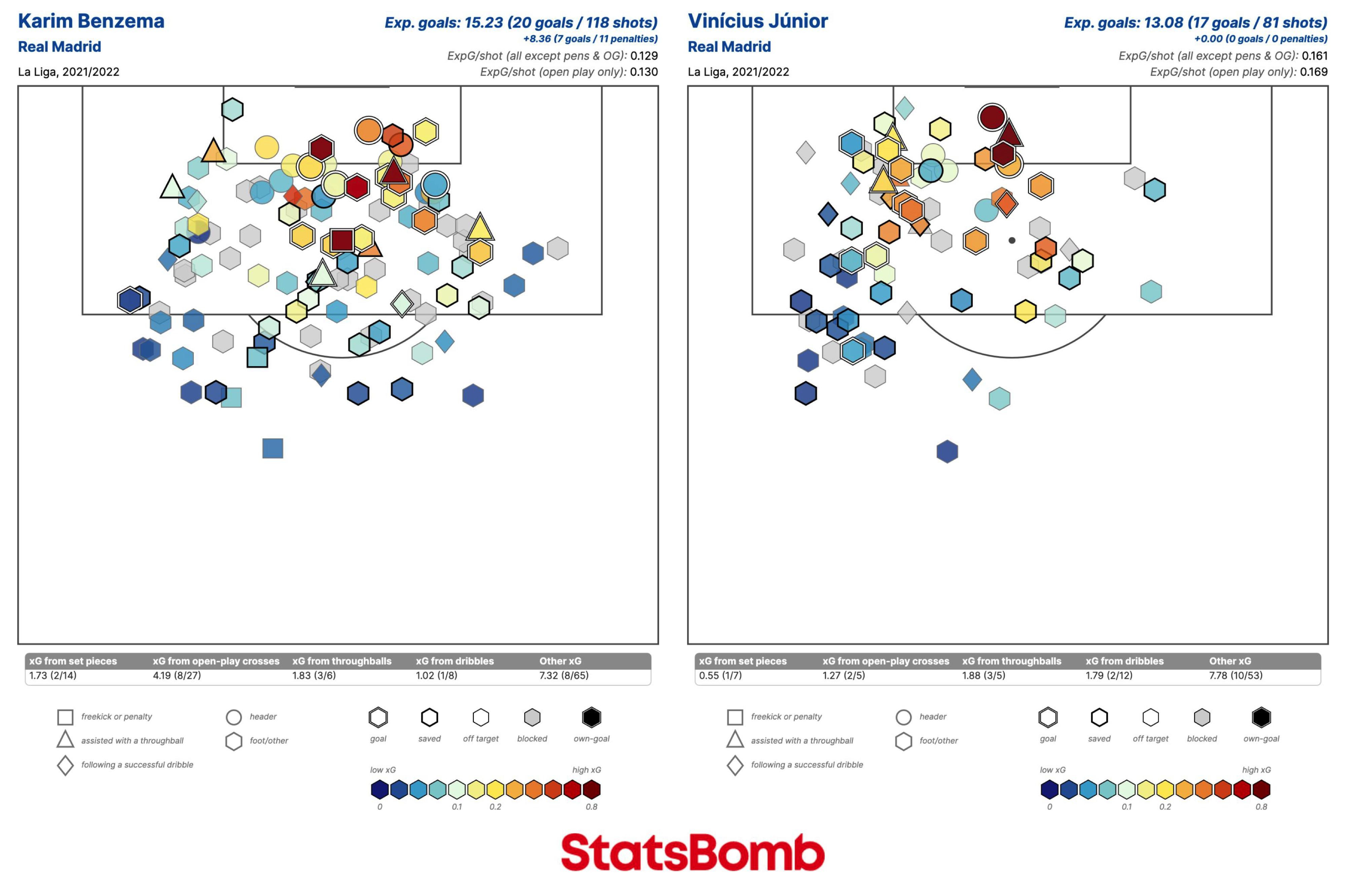
But it was in defence that Madrid gained most, conceding a full 16 goals less than expectation. Thibault Courtois put together a stellar season, the best of all the league’s goalkeepers, but his performance didn’t even account for half of the overall difference.
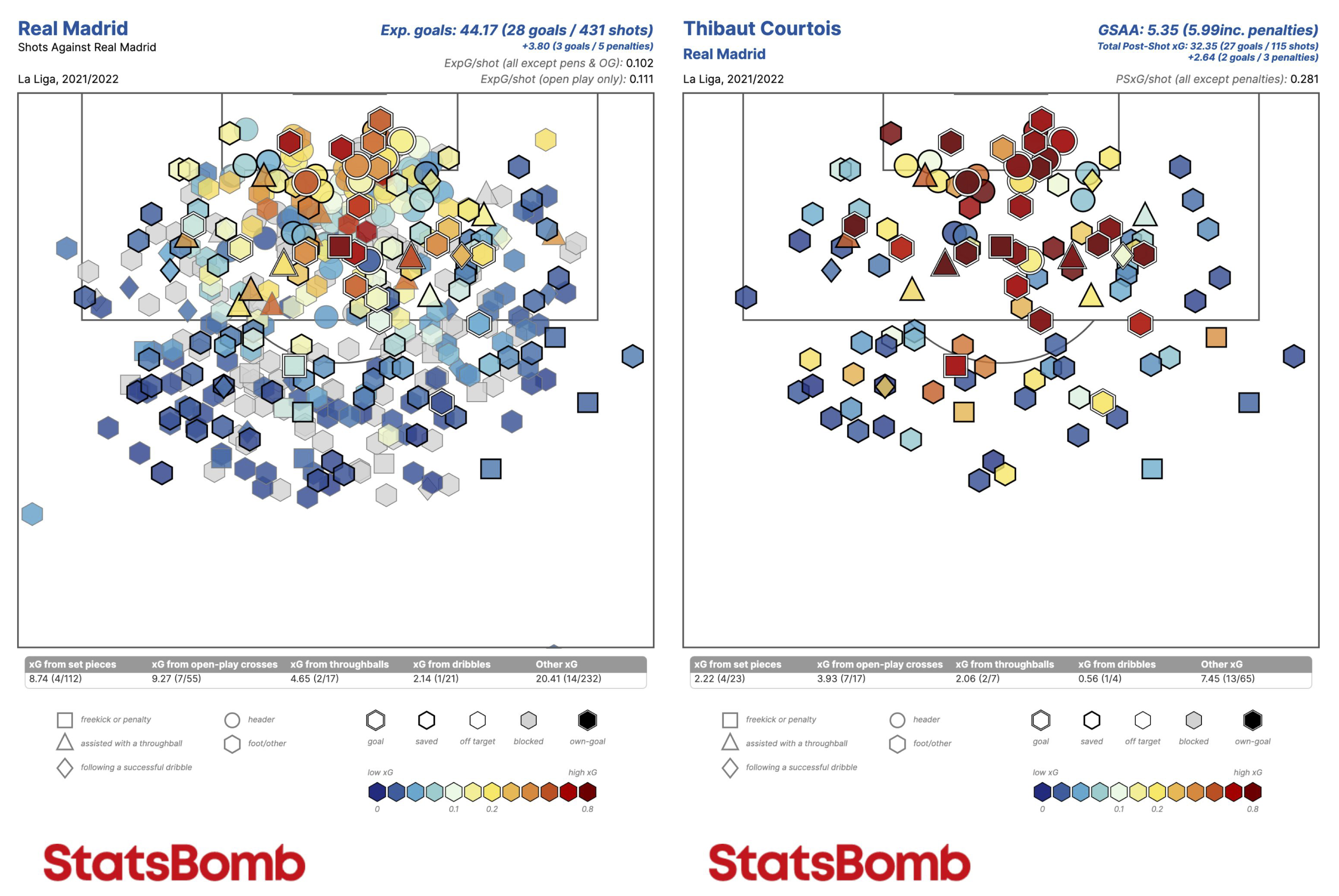
Madrid’s overperformance in attack at least fell within a reasonable range, but it is unlikely they will be able to rely on such an overperformance in defence in the 2022-23 season.
Atlético Madrid: A story of two seasons
At the end of the 2020-21 season, Atlético Madrid received praise from all quarters after winning La Liga; just half a year later, towards the end of January 2022, the press were already talking about the possible end of an era at the club.
Atlético finished the campaign in third, with 71 points in comparison to the 86 that had carried them to the league title the season before, but their underlying numbers remained more or less consistent. In fact, they were even a tad better last season, up from an xG difference of 0.46 per match in 2020-21 to 0.56 per match last time around.
The difference was in the degree to which they outperformed those numbers, as we can see on this trendline that plots their goal difference (green) against their xG difference (purple) over the course of the two campaigns, using a 15-match rolling average. Blocks of green represent outperformance of their xG difference; blocks of purple, underperformance.

In both seasons, Atlético were the team who most overperformed their expected numbers in attack. The difference between the two campaigns came in defence or more precisely, between the sticks.
In the 2020-21 season, Jan Oblak put together a fantastic campaign, saving nine more goals than could reasonably have been expected of an average goalkeeper given the quality of the shots that he faced. Last season, the until then highly reliable shot stopper conceded nearly six more goals than expected, the worst performance among all the division’s goalkeepers and a figure that explained almost the entirety of the team’s underperformance.
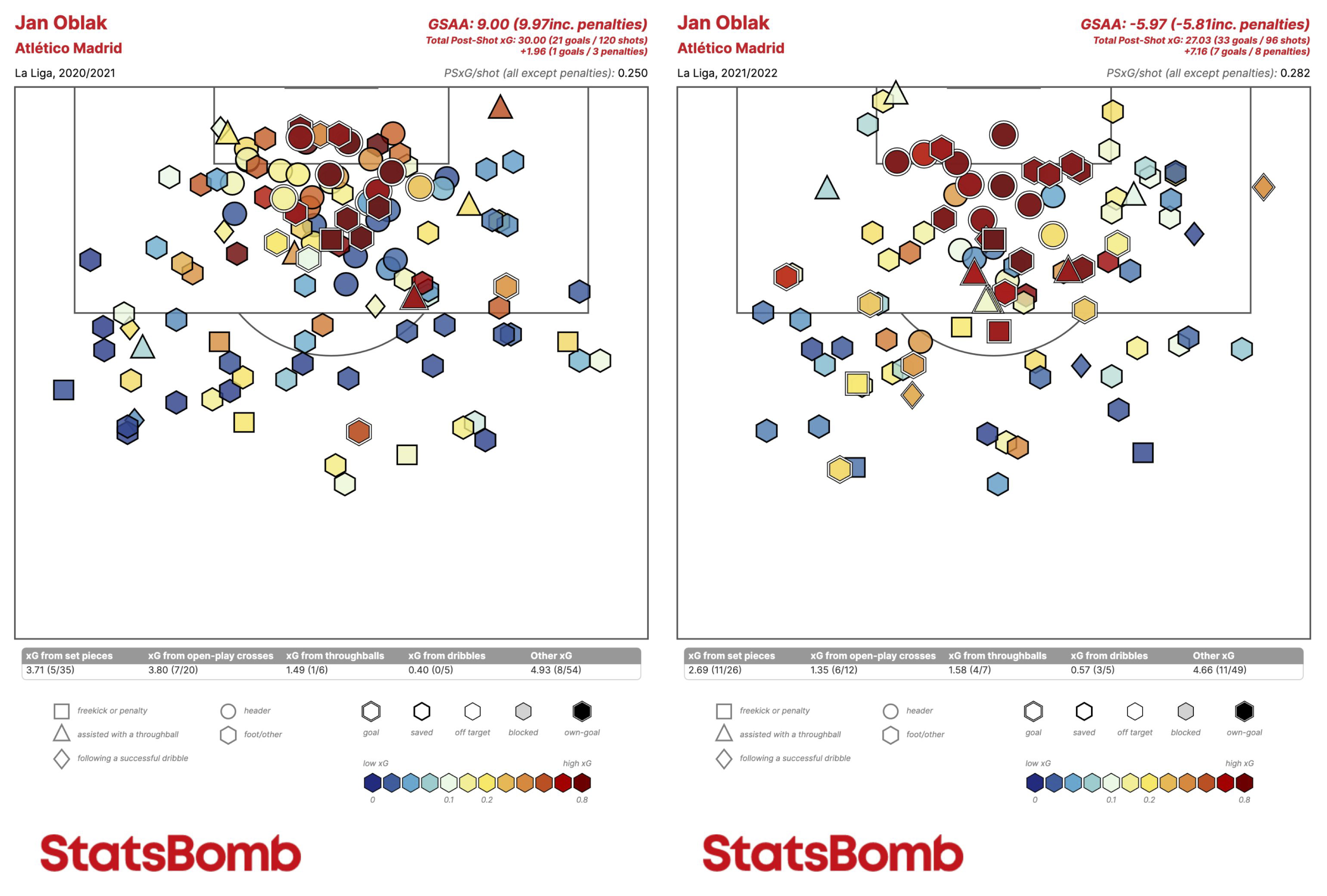
As noted above, the top three teams in La Liga last season actually recorded very similar xG differences. Atlético slightly improved theirs in relation to the 2020-21 season, while both Barcelona and Real Madrid’s underlying numbers got worse, falling from an xG difference of 0.98 per match to 0.60 per match in Barcelona’s case and from 0.76 per match to 0.58 per match in Madrid’s.
Everything could change in the new season. It is unlikely Madrid will again have the luxury of taking their foot off the accelerator quite so early in the campaign, while Barcelona have had a full preseason with Xavi to finetune their approach and have also spent significantly to improve their squad. But if the relative level of the three title challengers remains more or less stable, the race could well be decided by fluctuations of fortune between reality and expectation.
OBV from passes and carries by zone, La Liga 2021-22
On-Ball Value (OBV) is a StatsBomb exclusive model that assigns a value to every on-ball action in line with its positive or negative effect on the probability of the team scoring and conceding.
Here, we will use OBV to look at the areas of the pitch from which La Liga’s teams created most value last season in comparison to the league average.
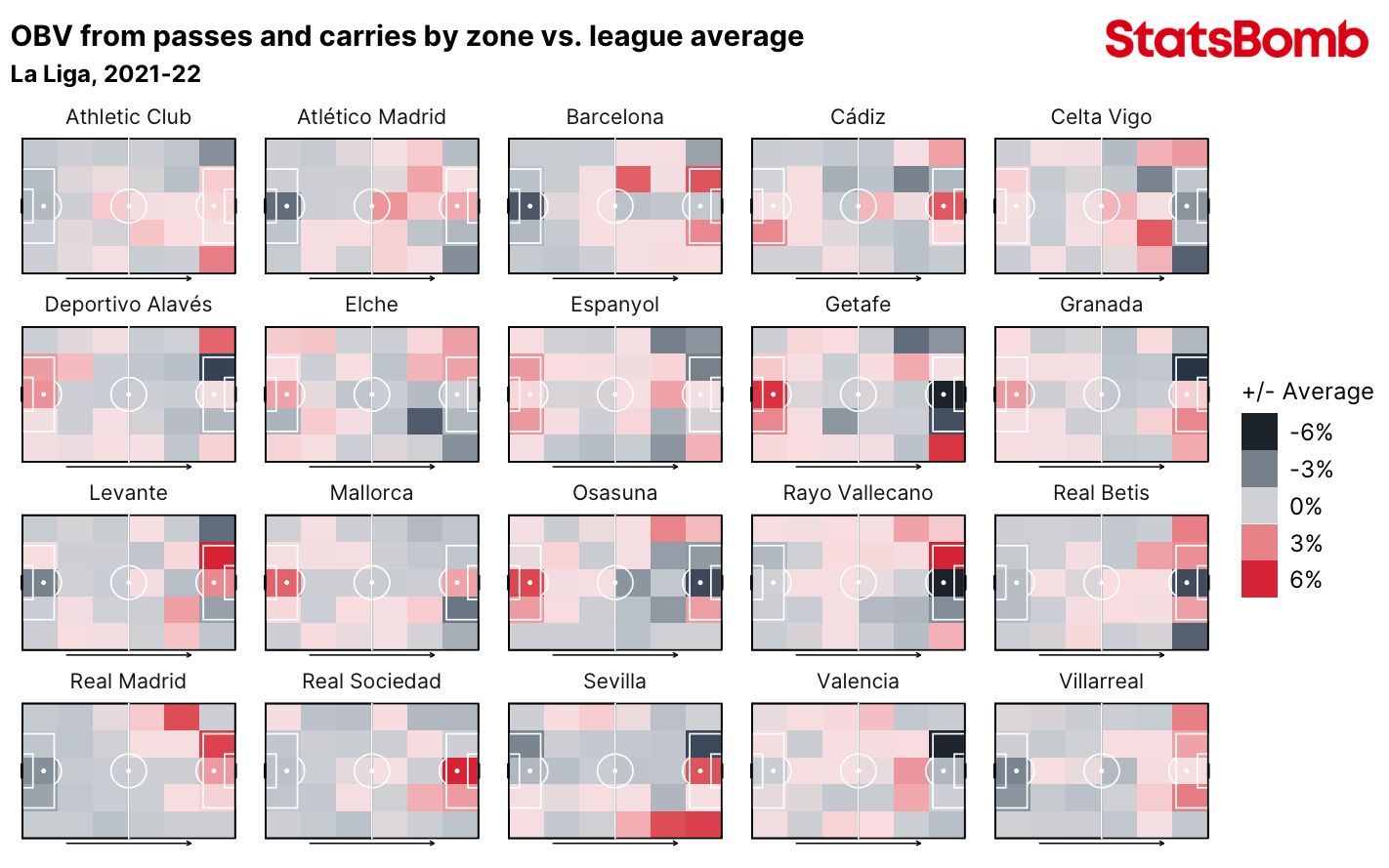
A few things stand out:
- Sevilla’s dependence on their right flank to create value, a flank that belongs to Jesús Navas (and, to a lesser degree, his reserve, Gonzalo Montiel).
- The most productive interior channel of certain teams: the right interior channel in Celta Vigo’s case, home of Iago Aspas; the left for teams like Atlético Madrid, Elche and Real Betis.
- The long-ball teams such as Cádiz, Getafe and Osasuna.
Let’s investigate two cases in greater detail:
The lack of central creation at Barcelona
It is strange to look at Barcelona’s plot and see the relative lack of red in the central and interior zones of the attacking half, the zones from which they have historically created so much danger.
If we compare last season’s plot with those of the preceding three campaigns, the difference is stark.

Last season was Barcelona’s first without Lionel Messi and his exit provoked a sudden change in the team’s approach, particularly during the first few months of the campaign under the leadership of Ronald Koeman. In the 2020-21 season, Barcelona attempted less crosses than any other team, both in absolute terms and as a percentage of all of their attempted box entries. In the first few months of the 2021-22 season, no team attempted more crosses in absolute terms, while only five attempted more proportionally.
Things changed a bit once Xavi took over in early November, but he still generally selected players who were more direct than associative in the right-wing role that had for so long been Messi’s.
That is why the signing of Raphinha from Leeds is so interesting. Adept at finding space to receive on the right, as a left-footer his natural inclination is then to link infield or cut inside diagonally towards goal. Between his arrival and the hope that Pedri might enjoy a campaign free of major injury, the central attacking zones might just regain some importance in the new campaign.
The Benzema-Vinícius Connection
The pair of heavy red zones on the left of the Real Madrid attack represent the area of the pitch from which Karim Benzema and Vinícius Júnior created their danger. Pases between them were, by far, those on Madrid that created most value according to OBV and the pair of them benefited from a potent connection that not only carried Los Blancos to the league title but also to success in the Champions League.
Vinícius took a big leap forward from season to season, greatly improving both his real and expected output in a role that gave him more freedom to position himself close to Benzema and so benefit from the Frenchman’s quality.

Madrid are yet to add another forward to their squad after their frustrated attempts to sign Kylian Mbappé and so it seems that the Benzema-Vinícius connection will again be the cornerstone of their attack in the 2022-23 season.
Where do La Liga’s teams press?
Let’s have a look at the areas of the pitch in which each of La Liga’s teams pressed most in the 2021-22 season.

Some teams stand out:
- Eduardo Coudet’s hyperactive Celta Vigo, La Liga’s most aggressive team out of possession.
- A Valencia side who underwent a violent change of approach under José Bordalás. Before his arrival, they were one of La Liga’s most passive sides out of possession; with Bordalás they became one of the most aggressive. Now we wait to see how they’ll look under new head coach Gennaro Gattuso.
- The most passive of all: Espanyol. That will likely change under Diego Martínez, whose Granada side were consistently more aggressive than the league average.
Ranking of value added through line-breaking passes, La Liga 2021-22
You might have seen that we have a new metric derived from the StatsBomb 360 dataset that identifies line-breaking passes. If we combine it with the outputs of our OBV model, we can create a ranking of La Liga players who added most value with line-breaking passes during the 2021-22 season.
Here are the top 10 amongst all players who saw at least 1,200 minutes of action:
- Luka Modrić, Real Madrid: 0.12 OBV per 90
- Jordi Alba, Barcelona: 0.12 OBV per 90
- Rodrigo de Paul, Atlético Madrid: 0.11 OBV per 90
- Adnan Januzaj, Real Sociedad: 0.10 OBV per 90
- Nolito, Celta Vigo: 0.10 OBV per 90
- Dani Parejo, Villarreal: 0.10 OBV per 90
- Sergio Canales, Real Betis: 0.10 OBV per 90
- Salva Sevilla, Mallorca: 0.09 OBV per 90
- Samuel Chukwueze, Villarreal: 0.09 OBV per 90
- Iker Muniain, Athletic Club: 0.09 OBV per 90
It is worth noting that at time of writing both Januzaj and Nolito are without clubs. Nolito is thought to be keen on a move to Cádiz, his hometown (well, home province) team.
Interesting Transfers
Brais Méndez: Celta Vigo to Real Sociedad
Brais Méndez is a deceptive kind of player. All neat touch and fluid motion, at first glance one would assume him to be a highly talented creator, but his creative output has never been hugely impressive.
What he does provide in attack is a decent amount of everything: dribbles, deep progressions, key passes, shots. Add to that his significant defensive contributions, particularly his insistent pressing and intelligence in intercepting, and what you have is an intriguing player with room still to improve.

Real Sociedad have paid €14 million to sign Brais to a six-year deal. A wise investment?
Valentín Castellanos: New York City FC to Girona
Segunda champions Almería have by some distance been the biggest spenders of the three promoted sides, but it is Girona who have perhaps made the most interesting signing of all. Part of the City Football Group ecosystem for five years now, Valentín Castellanos arrives in Catalunya on the back of a year and half as the most potent goalscorer in MLS.
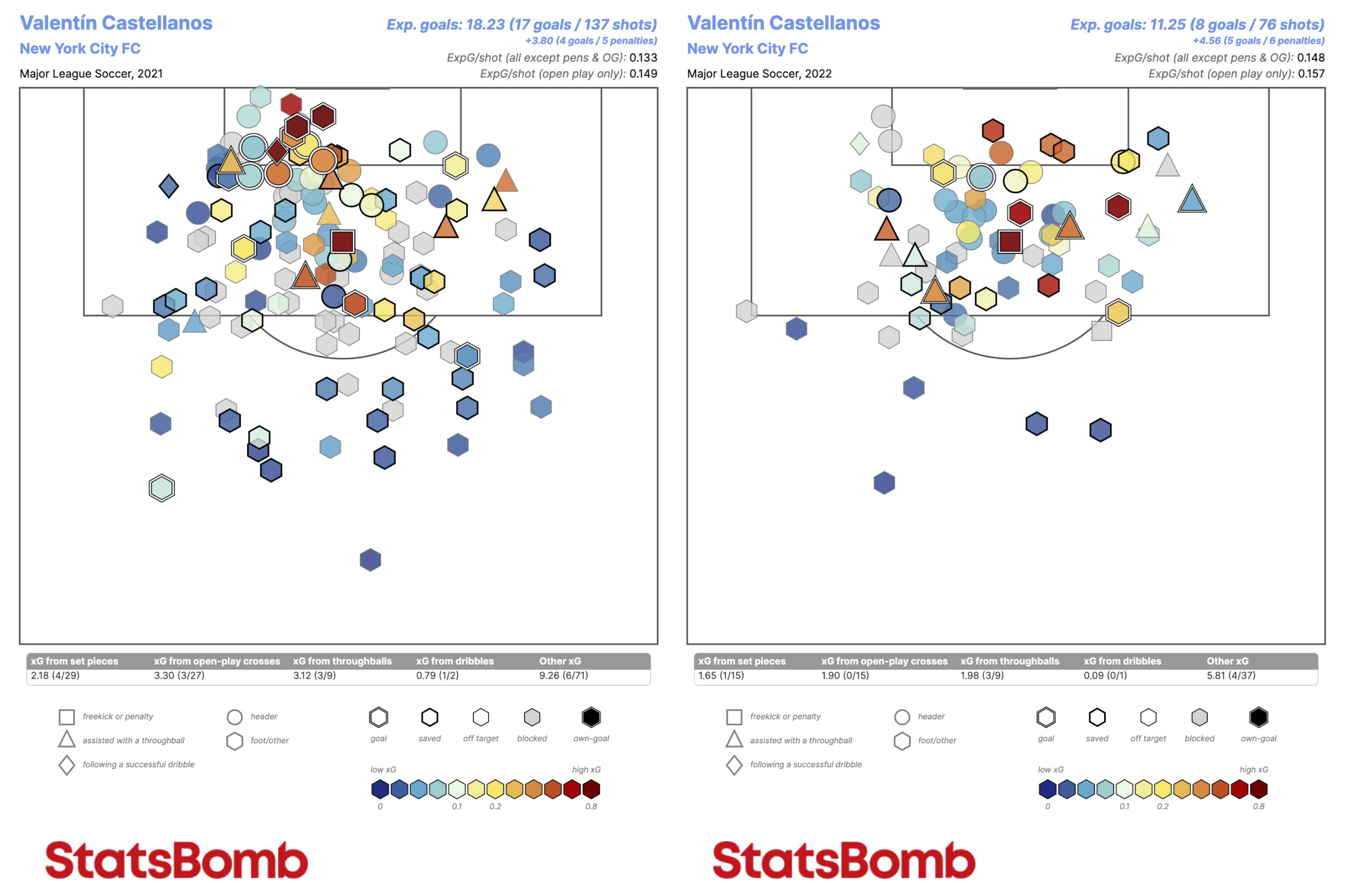
A natural number nine, the Argentinian comes in to replace his compatriot Nahuel Bustos and is likely to form a rioplatense strike force with veteran Uruguayan striker Cristhian Stuani, the team’s top goalscorer in Segunda last season.

Aurélien Tchouaméni: AS Monaco to Real Madrid
At time of writing, the €80 million that Real Madrid laid out to sign 22-year-old midfielder Aurélien Tchouaméni from Monaco make him the most expensive acquisition of La Liga’s off-season.
Tchouaméni has presented a consistent profile over the last two seasons, that of a multifuncional midfielder with good defensive numbers and very solid on-ball output.

It will be interesting to see what type of role the Frenchman receives at Madrid. He isn’t a pure defensive screener like Casemiro, and though he could slot in at the base of the midfield, it would seem to put an unnecessary limitation on what he can offer.
Other things to watch out for
- Cádiz improved immensely following Sergio González’s appointment as head coach in January, taking 25 points from their final 18 matches to escape relegation by a single point. But their underlying numbers were even better than top-line results. From his arrival until the end of the campaign, only Barcelona registered a better xG difference than Cádiz’s 0.52 per match. Can they maintain that performance level into the new campaign?
- In contrast, Espanyol and Valencia were responsible for some of the league’s worst xG differences over the second half of the campaign. Can their new head coaches, Martínez and Gattuso respectively, help them change course?
- The newly promoted teams, Almería, Girona and Real Valladolid, had the three best xG differences in Segunda last season. How will they get on in the top flight?
We’ll soon find out.

